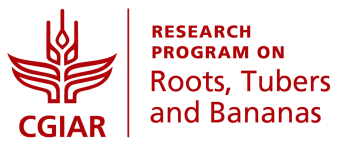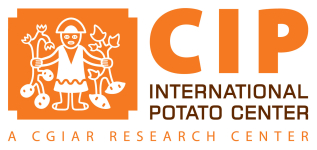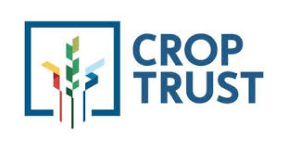Potato variety "Victoria" adoption in Uganda generated gross benefits of USD 1.04 billion from the period 1991-2016 for potato farmers
Published on: April 3, 2021, Submitted by Willy Pradel Caceres on: March 29, 2021, Reporting year: 2020
Uganda has around 39,000 ha of potato (FAOSTAT), and the potato area in Uganda range from 0.24 ha/household (Mbowa et al. 2016) and 0.76 ha/household (Priegnitz et al., 2019). Victoria became the largest potato variety cultivated in Uganda, accounting for 53.6% of potato area in 2010. By extrapolating average potato area and adoption percentage, between 27,500 to 87,100 households cultivated Victoria. The estimated present value of the gross benefits from Victoria adoption is USD 1.04 billion from the period 1991-2016
Victoria in a field in Uganda
A study conducted by Vivian Bernal-Galeano, from Virginia Tech University, in collaboration with Crop Trust and the International Potato Center, had the objective to find evidence of the impact of CIP-related potato varieties in Africa.
Vivian focused on Victoria potato variety which was obtained by CIP breeders as the product of a cross made in 1981 from the ‘B population’ developed in Peru, with the objective of obtaining late blight resistant clones with good yields. Moreover, after analyzing the source of potato accessions used for the crossing, the study found that 72% of the material used to generate Victoria came from CIP-genebank material.
This variety was later released in Uganda in 1991. Uganda has around 39,000 ha of potatoes according to FAOSTAT. Later, Victoria became the largest single potato variety cultivated in Uganda in 2005 with 34% of the total potato area (Kaguongo et al., 2008), and by 2010, the area had even increased to 53.6% (Walker and Alwang, 2015).
Even though Victoria lost its late blight resistance, the comparative market advantage of Victoria such as its high yield (7.55% higher yield than the most commonly grown potato varieties), early maturity, and highly desired red skin and cream flesh, make this variety a favorite between Ugandan farmers. Because of that, Victoria received the highest farm gate prices with respect to other potato varieties, and it had one of the highest gross returns of the most common varieties cultivated in Uganda (Kaguongo et al., 2008).
To estimate the aggregated benefits from Victoria, we assumed a close economy, and using data from FAOSTAT and World Bank to extrapolate with official national information of potato yields, agricultural gross production value, the quantity of production, and harvested area. Our results indicate that the estimated present value of the gross benefits from Victoria adoption is USD 1.04 billion from the period 1991 – 2016.
The benefits of Victoria variety to potato producers are found to be significant and show the importance of research CGIAR centers together with local partners to overcome limiting factors in potato production and commercialization.
The success of Victoria in Uganda comes due to the high market value of trait characteristics of this variety, data from the adoption study shows that adoption is increasing, despite the loss of late blight resistance. There is room for improvement in the next generation of breeding material, but so far Victoria is a victory to the breeding program.
Stage of Maturity and Sphere of influence
-
Stage of Maturity: Stage 3
-
Contributions in sphere of influence:
1.4.3 - Enhanced genetic gain
Acknowledgement
Funding for this research was provided by the CGIAR Genebank Platform, International Potato Center, and the Crop Trust through the 2018 Genebank Impacts Fellowship, and the CGIAR Research Program on Roots, Tubers, and Bananas. The Standing Panel on Impact Assessment of the CGIAR provided support during the early stages of this work.









